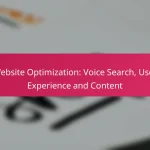Understanding the differences between long-form and short-form content is essential for effective content strategy. Long-form content, exceeding 1,000 words, provides in-depth insights and is ideal for engaging readers and enhancing SEO. In contrast, short-form content, typically under 1,000 words, quickly conveys information and captures audience attention. Choosing the right format depends on your specific goals and the nature of the topic at hand.
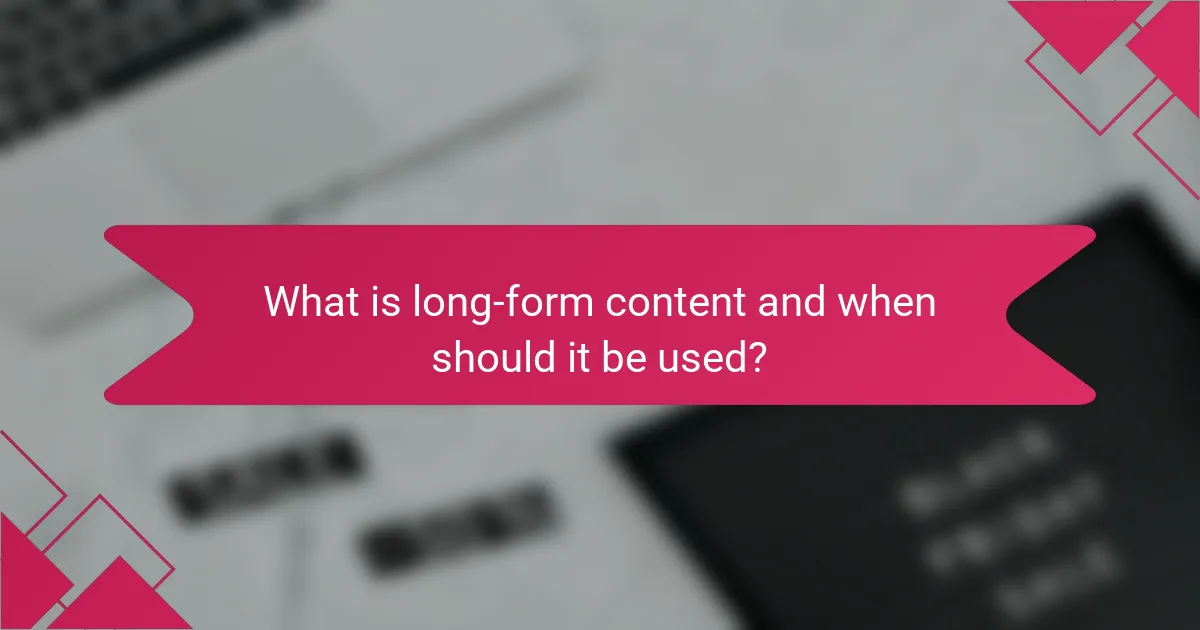
What is long-form content and when should it be used?
Long-form content typically refers to articles or posts that exceed 1,000 words, providing in-depth information on a specific topic. It should be used when the subject requires comprehensive coverage to engage readers and improve SEO performance.
Definition of long-form content
Long-form content is characterized by its length and depth, often ranging from 1,000 to 5,000 words or more. This type of content allows for detailed exploration of topics, including thorough explanations, examples, and supporting data.
Unlike shorter articles, which may only scratch the surface, long-form content aims to provide a complete understanding of a subject, catering to readers seeking extensive information.
Benefits of long-form content
One of the primary benefits of long-form content is its ability to enhance SEO rankings. Search engines tend to favor comprehensive articles that keep users engaged, leading to lower bounce rates and higher dwell times.
Additionally, long-form content can establish authority and credibility in a niche, as it demonstrates expertise and provides valuable insights. Readers are more likely to share and link to well-researched, in-depth articles, further amplifying reach.
Best use cases for long-form content
Long-form content is ideal for topics that require detailed analysis, such as how-to guides, case studies, and comprehensive reviews. For instance, a thorough guide on digital marketing strategies can attract readers looking for extensive information.
It is also effective for educational content, where readers benefit from a deep dive into complex subjects. When aiming to build authority or improve SEO, consider using long-form articles to address frequently asked questions or industry trends.
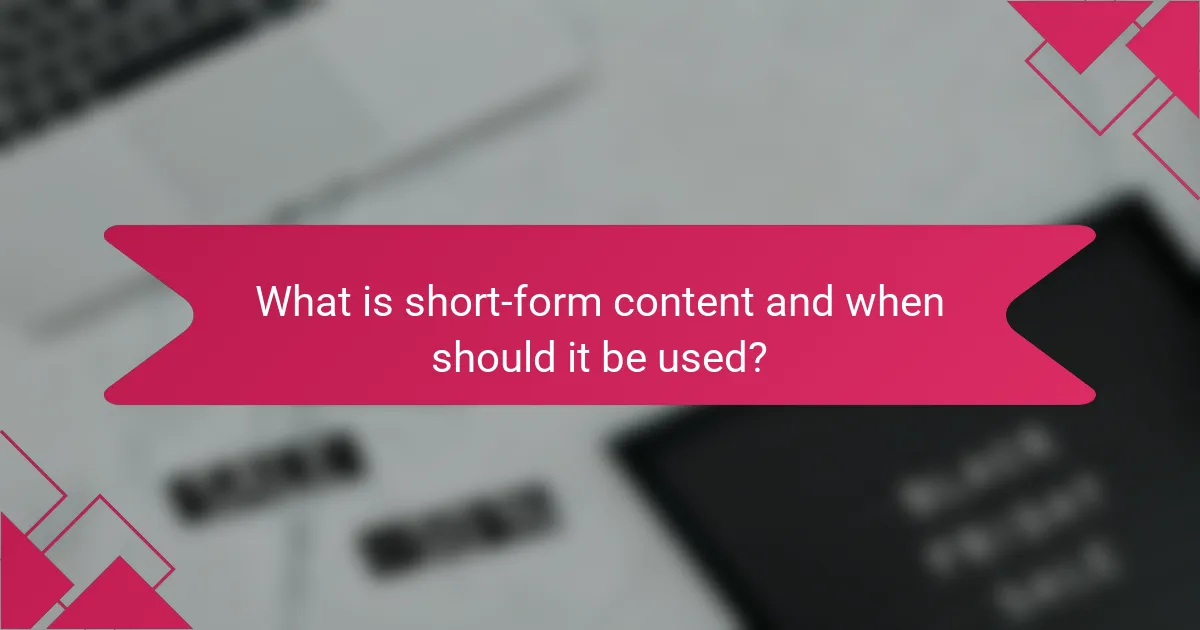
What is short-form content and when should it be used?
Short-form content refers to concise pieces of information, typically ranging from a few sentences to a couple of hundred words. It is best used when the goal is to quickly engage the audience or convey straightforward information without requiring extensive detail.
Definition of short-form content
Short-form content is characterized by its brevity, often consisting of blog posts, social media updates, emails, and advertisements. These formats are designed to deliver a message quickly and effectively, making them ideal for audiences with limited attention spans.
Generally, short-form content is less than 1,000 words, with many pieces being even shorter, often under 300 words. This allows for rapid consumption and easy sharing across various platforms.
Benefits of short-form content
One of the primary benefits of short-form content is its ability to capture attention quickly. In a fast-paced digital environment, readers often prefer quick insights over lengthy articles. This format can lead to higher engagement rates, especially on social media.
Additionally, short-form content is easier to produce and can be updated frequently, allowing brands to stay relevant and responsive to current events or trends. It also facilitates quick communication, making it suitable for marketing campaigns and announcements.
Best use cases for short-form content
Short-form content is particularly effective for social media posts, where users scroll rapidly and prefer bite-sized information. Platforms like Twitter, Instagram, and TikTok thrive on short, engaging content that can go viral.
Other ideal use cases include email newsletters, product descriptions, and promotional materials. These formats benefit from concise messaging that highlights key features or offers without overwhelming the reader.
When creating short-form content, focus on clarity and impact. Use strong visuals and compelling headlines to draw in your audience, ensuring that your message is clear and actionable.
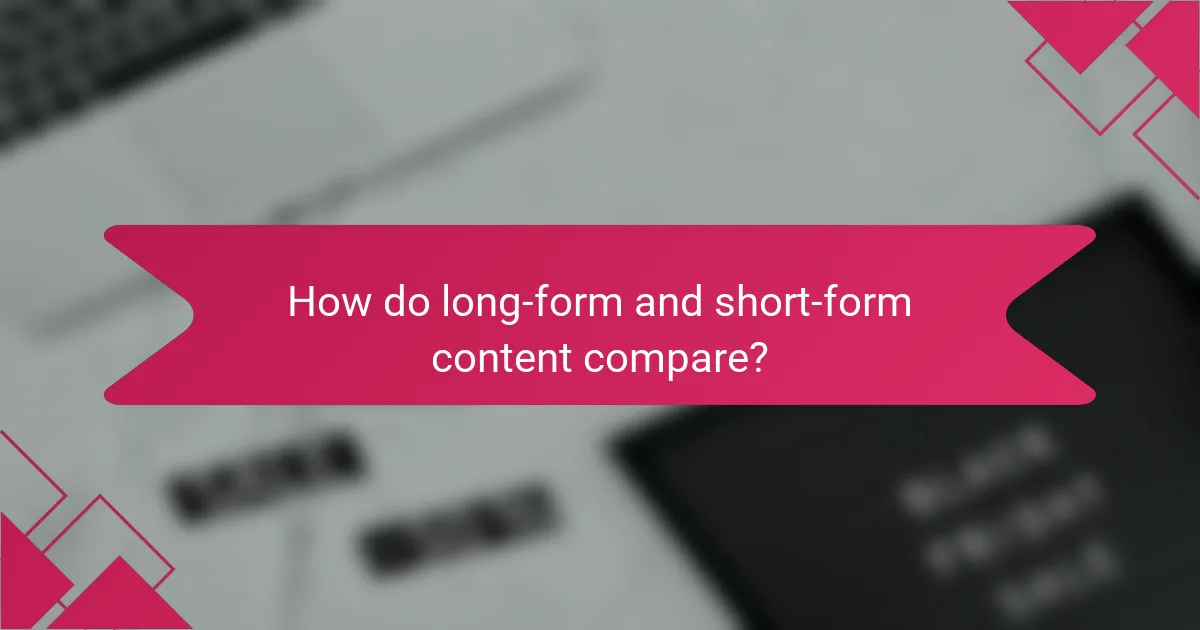
How do long-form and short-form content compare?
Long-form content typically consists of articles or posts that exceed 1,000 words, while short-form content is usually under 1,000 words. Each type serves different purposes and can be effective depending on the goals of the content strategy.
Engagement metrics comparison
Engagement metrics for long-form and short-form content can vary significantly. Long-form content often leads to higher average time on page and lower bounce rates, as readers tend to spend more time digesting in-depth information. In contrast, short-form content may generate quicker interactions, such as shares and comments, due to its concise nature.
Consider using analytics tools to track these metrics. For instance, if your goal is to inform and educate, long-form might be more beneficial, while short-form could be ideal for quick updates or social media posts.
SEO performance comparison
Search engine optimization (SEO) performance can differ between long-form and short-form content. Long-form articles often rank better in search results because they provide comprehensive coverage of topics, which search engines favor. They can also incorporate more keywords and related terms naturally throughout the text.
However, short-form content can still perform well if it addresses specific queries effectively. Aim for a balanced approach by using both types, ensuring that each piece serves its intended purpose while optimizing for relevant keywords.
Audience preferences analysis
Understanding audience preferences is crucial when deciding between long-form and short-form content. Some audiences prefer detailed articles that provide thorough insights, while others favor quick, digestible pieces that get straight to the point. Conducting surveys or analyzing user behavior can provide insights into what your specific audience prefers.
As a guideline, consider the platform and context. For example, social media users often lean towards short-form content, while blog readers may appreciate the depth of long-form articles. Tailoring your content to your audience’s preferences can enhance engagement and effectiveness.
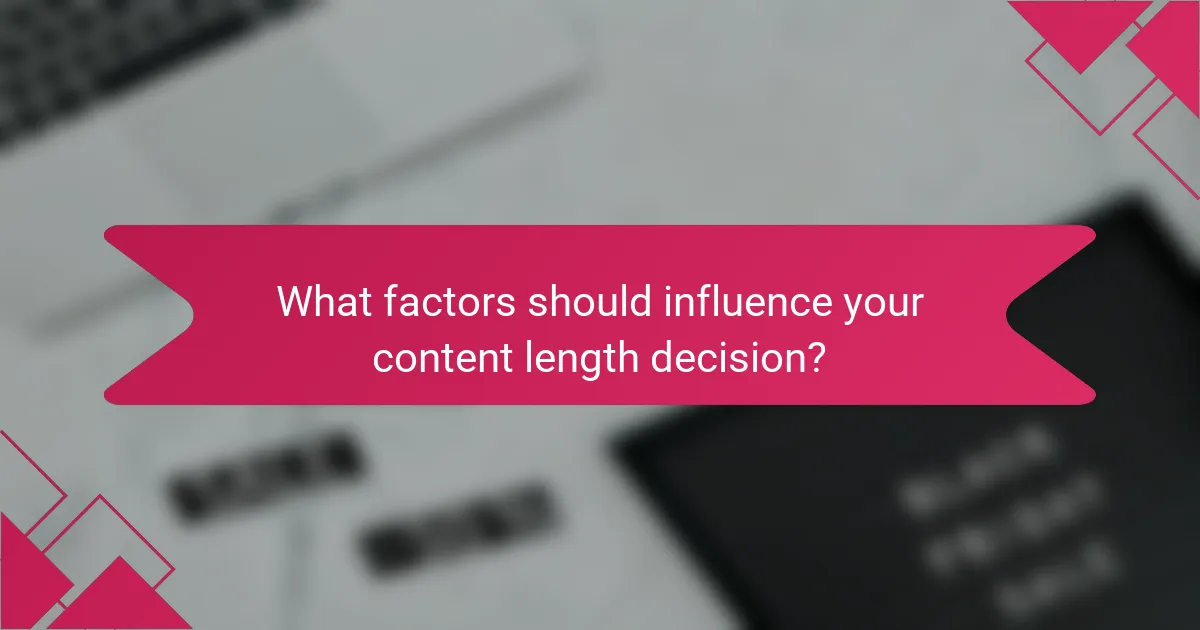
What factors should influence your content length decision?
Several key factors should guide your decision on content length, including your target audience, the goals of your content, and the platforms where it will be distributed. Understanding these elements can help you choose the most effective format for your message.
Target audience characteristics
Your target audience’s preferences and behaviors significantly impact content length. For instance, younger audiences may prefer shorter, more engaging formats like videos or social media posts, while professionals might appreciate in-depth articles or whitepapers that provide comprehensive insights.
Consider conducting surveys or analyzing engagement metrics to determine what length resonates best with your specific audience. Tailoring your content to their preferences can enhance engagement and retention.
Content goals and objectives
The goals of your content play a crucial role in determining its length. If your aim is to inform or educate, longer content may be necessary to cover the topic thoroughly. Conversely, if your goal is to entertain or create quick engagement, shorter content is often more effective.
Establish clear objectives before creating content. For example, a blog post aimed at driving traffic might benefit from a length of 1,500 to 2,500 words, while a social media update should be concise, ideally under 280 characters.
Platform and distribution considerations
The platform where your content will be shared can dictate the appropriate length. For example, articles on professional sites like LinkedIn may perform better when they are longer and more detailed, while content on platforms like Twitter or Instagram should be brief and visually appealing.
Be aware of the norms and expectations of each platform. A good rule of thumb is to adjust your content length based on the typical engagement patterns of users on each platform, ensuring your message is effectively communicated.
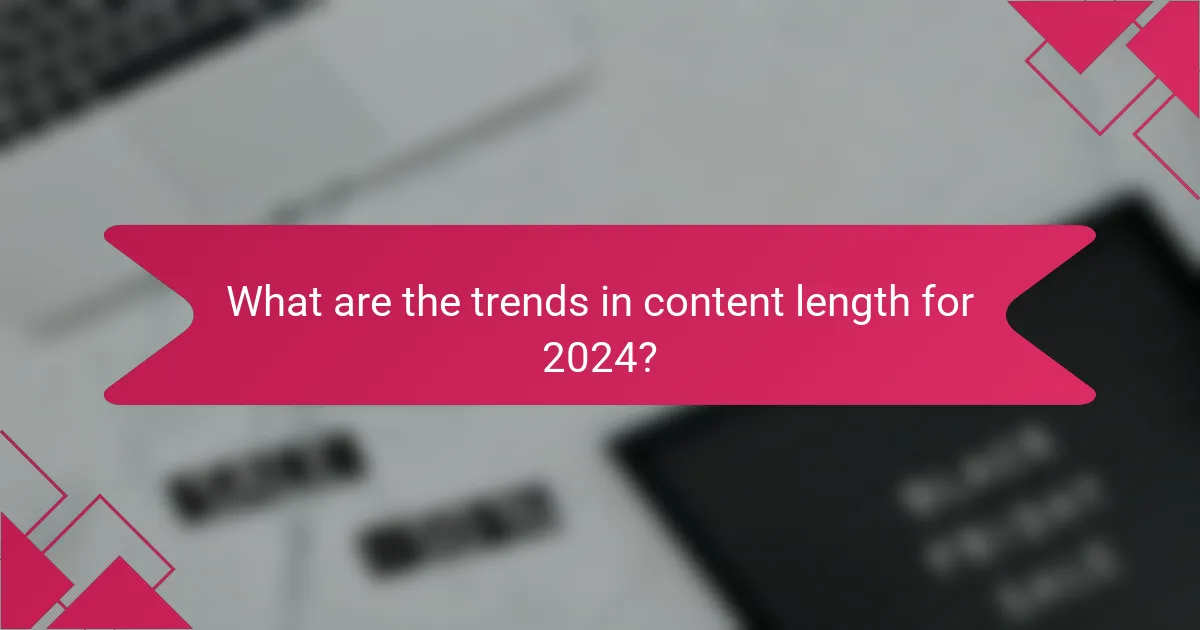
What are the trends in content length for 2024?
In 2024, content length trends indicate a growing preference for both long-form and short-form content, depending on the audience’s needs and the platform used. While short-form content remains popular for quick consumption, long-form articles are increasingly valued for their depth and detail.
Emerging preferences in content consumption
Consumers are gravitating towards content that fits their immediate needs. Short-form content, such as social media posts and quick videos, is ideal for users seeking instant information or entertainment. In contrast, long-form content, like in-depth articles and comprehensive guides, appeals to those looking for thorough insights and detailed analysis.
Marketers should consider the platform when deciding on content length. For instance, Instagram and TikTok favor shorter formats, while platforms like Medium or LinkedIn are more suited for longer, informative pieces. Tailoring content to the audience’s preferences can significantly enhance engagement and retention.
Impact of AI on content creation
AI is transforming how content is created, influencing both length and style. Tools powered by AI can generate short-form content quickly, making it easier for brands to maintain a consistent online presence. However, AI can also assist in crafting long-form content by providing data-driven insights and suggestions for structure and topics.
While AI-generated content can save time, it is crucial to ensure quality and authenticity. Human oversight remains essential to refine the content, maintain brand voice, and ensure relevance. Balancing AI efficiency with human creativity can lead to effective content strategies that cater to diverse audience preferences.
